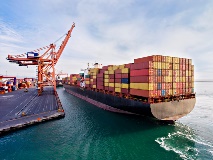Casualty Insurance
Amwins delivers primary and excess casualty insurance solutions for your clients' most complex risks.

Casualty Insurance
Amwins delivers primary and excess casualty insurance solutions for your clients' most complex risks.

Custom solutions and market clout at your fingertips
With more than 580 dedicated casualty professionals across the country, collaboration is in our DNA. Amwins delivers trusted consultation, market access and creative program structures to place coverage for even the most complex and layered accounts —providing value-added resources, unmatched service and expertise every step of the way.
$9.4B
annual U.S. premium placements
936
dedicated professionals
700
casualty markets we place business with
Casualty areas of specialty
Actuarial services
Licensing robust cutting-edge software, our in-house actuarial team runs account and portfolio-level reports ensure submission details and pricing are as accurate as possible.
Claims advocacy
Custom product development
Casualty resources + insights
Stay up to date on emerging casualty insurance trends and topicsState of the U.S. Logistics Insurance Market
Why So Specific?
While it’s important to understand the state of the larger P&C market, niche areas can get lost in the shuffle. The same applies to the logistics and forwarding industries, where changes have been occurring for some time, yet the true breadth of the transformation escapes capture.
For decades, the Logistics Insurance market has been considered a sub-market of the cargo or ocean marine market. However, this segment is much more than cargo and cargo stock throughputs (STP). In full, it entails multiple lines of coverage, ranging from primary cargo to casualty (liability to third parties), and even professional lines. This concept requires a different underwriting approach - a hybridization of ocean and inland marine underwriting, along with focused specialization - to understand the nuances, contractual environment and service requirements of logistics customers.
The Complex Sibling of the Cargo Insurance Market
Those in the logistics space often refer to themselves as the complex sibling of the cargo market. The reason for such a description is quite straight forward: there are no less than six types of insurance coverage that span the entire transportation insurance spectrum and fall under a relatively young and untested market. In other words, there is no historical reference upon which to base the future of this industry, as all lines of business existed before but were sold separately.
Imagine one policy covering so many specialty products - not as easy as it sounds. A 2018 logistics insurance analysis released by Grand Review Research, Inc., determined that the global logistics insurance market size was valued at $46.65 billion in 2015. The full market is inclusive of marine, aviation, transportation and other segments, but this article will focus on six major lines of business:
- Shipper interest ocean/air cargo and domestic transit
- Warehouse storage goods of others
- Carriers legal liability (NVOCC, IAC and MTCLL)
- Forwarders legal liability (freight brokers legal)
- Freight forwarders errors & omissions
- Warehouse legal liability
An Age Gap
It is no secret that specialized logistics underwriters are a scarce commodity in the United States, with many approaching retirement. More than 90% of those who remain are employed by five companies, three of which specialize in true logistics. The generational and knowledge gaps in the logistics segment are so pronounced that many insurance carriers have shut their doors to this type of business. So what needs to change? Education, education and education. Oh, and hiring and adequately training new talent.
In the past, working in insurance was what you did when you couldn’t get a job anywhere else, but in today’s competitive job environment, insurance can be viewed as a more attractive opportunity. It’s imperative that senior underwriters and leaders transfer their knowledge capital to the next generation in order to improve upon the poor results seen over the past 10 years.
Innovation as a Market Disruptor
Let’s face it, logistics insurance departments are not on the shortlist for most insurance carrier’s management circles. Little priority is given to invest in a department that is misunderstood or isn’t thought to have enough headroom for growth. Technology paves the path toward innovation and is a key component of a healthy, service-oriented logistics program. The underwriting process will always rely upon the underwriter’s ability to analyze and price a risk, but the process itself remains largely manual, involving time-consuming processes and spreadsheets.
Over the last 20 years, the industry has managed to get rid of Telexes and carbon-copy paper, but not much else. In the logistics space, speed-to-market is the name of the game and developing insurance technology to keep up with that speed is of critical importance. If you haven’t done so already, it may be time to ask what your carrier is doing to invest in technology.
Service Is Not an Option
The U.S. logistics insurance market has been controlled by few key players for the past 25 years. With such a grip on the market, brokers have been left with relatively limited coverage options for their clients. While it’s clear that speed to market and service are becoming increasingly important to logistics companies, the logistics insurance market seems to be stuck on the old model and asking, “Why fix what’s not broken?”
The argument for change is that a well-serviced client is often a well-educated client, which tends to translate to a lower cost of risk to both the client and the industry as a whole. A dynamic industry like logistics demands reliable and capable underwriters who keep up with the pace of blockchain and trade.
Carrier Exodus
Since October 2018, nine carriers have either parted ways with the U.S. logistics insurance market or increased minimum premium in order to lower exposure and increase profitability. While there are varying reasons for such exodus, worth mentioning are lack of succession planning, limited access to underwriters with experience in all portions of logistics risk, and full-on retreat as a result of losses.
While the logistics market fights for its independence from the cargo segment, it is apparent that a hardening market is essential independent of what is happening in the general cargo market. This market hardening can be attributed to an overall lack of understanding, experience, innovation and service, among other things.
Let’s Talk Rate
For the first time in many years, all lines of business covering loss to merchandise in transit, forwarders legal responsibilities and warehousemen’s liability premiums are on the rise. But how far along are we? While all lines are gaining traction in terms of rate surges, there are a few worth mentioning:
A. Carriers Legal liability
While NVOCC and IAC are on the rise, motor truck cargo rates have surged by triple digits in the last six months alone. Carriers restructuration and a lack of experienced capacity have hardened the market, and like many historically underpriced lines, losses may be right around the corner.
B. Warehouse Legal Liability
The departure of three key players intensified what already was a toughening market. Most carriers are pushing for higher rates and a healthier market environment while London is taking a stance on profitability, which furthers the surge in rating and conditions fairness. Warehouse “all risk” masquerading as warehouse legal liability will also affect rates, as there are still programs covering CAT perils for which the insured, as a warehouseman, typically is not legally liable.
C. Shippers Interest (Ocean/Air Cargo and Inland Transit All Risk - Goods of Others)
Like cargo, shippers interest has seen rates increase at a considerably slower pace than most lines. While continuing intensification is forecasted as carriers stray away from logistics accounts, rates on commodities like electronics, refrigerated or perishable goods and all other complex goods, should see a steeper trend north than general merchandise rates. This follows the general insurance industry trend of more accurately pricing risks that present larger risk of loss, rather than a broad brush-stroke increase across the board.
Have We Learned Our Lesson?
Probably not (yet). There is a needed shift toward profitability and sustainability in the P&C market, as most insurance carriers are struggling with losses, yet capital remains plentiful. This capital needs to be deployed, whether that’s investing in people, technology or writing more insurance policies. The market is in an odd flux of aggressive risk purchasing and, simultaneously, a retreat to profitability.
Does this hold true for logistics insurance? It’s too early to tell. It is clear that the general retreat of carriers from the space will create disruption for logistics insurance buyers. To minimize that disruption, the logistics insurance market needs a new approach that encompasses technology, knowledge and service as means to a successful and growing industry.
AmWINS Specialty Logistics Underwriters (ASLU), an AmWINS Group company, is a managing general agency specializing in the complex risk factors of the logistics and cargo industry. ASLU is dedicated to offering a high level of service to their clients through a unique balance of industry knowledge, responsiveness and technology. To learn more, visit amwins.com/aslu.
- Casualty
- Marine and Logistics
- Professional Lines
- Property
- Property & Casualty
- Transportation
Filling excess placements despite changes in exposure.
When an insured with five New York City hotels converted operations to COVID-19 shelters for the local homeless population, the change in exposure threw a wrench in the renewal. While the general liability carrier stayed on the account, the excess carrier discontinued coverage. The retail agent contacted Amwins to fill the excess coverage for these locations.
With a local government agency managing and operating these shelters, the insured’s exposure was lessened. However given the venue, occupancy and market conditions, filling out the program was still an uphill climb. Through our market access and industry expertise, we were able to fill the policy with just two layers - securing a big win for our retail client and their insured.


